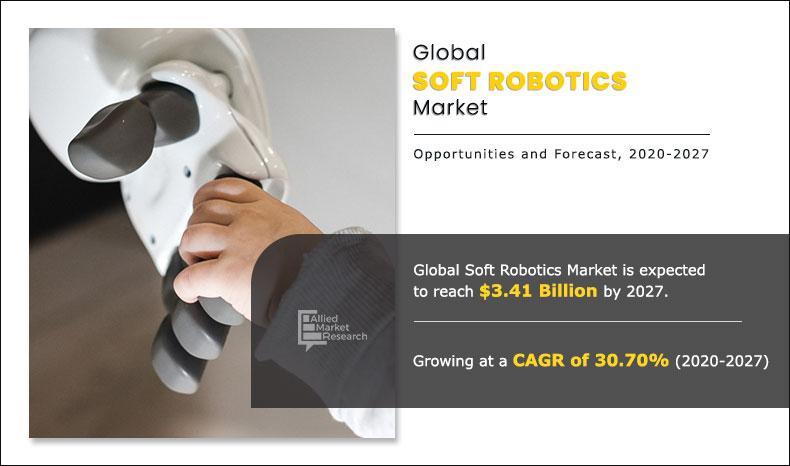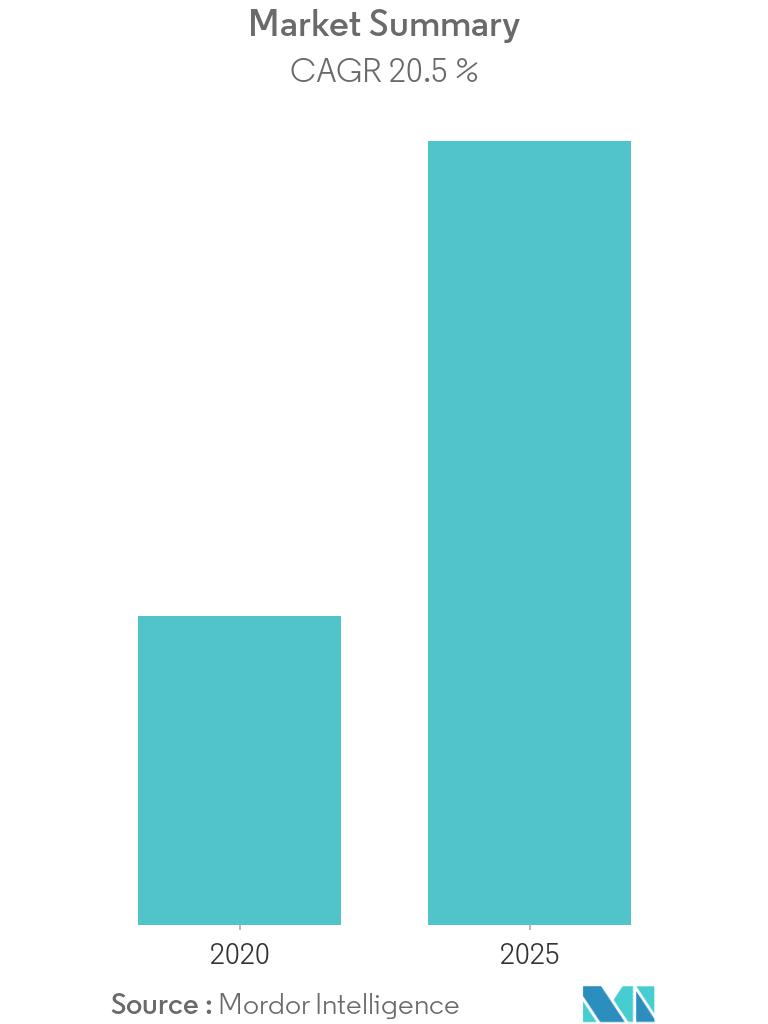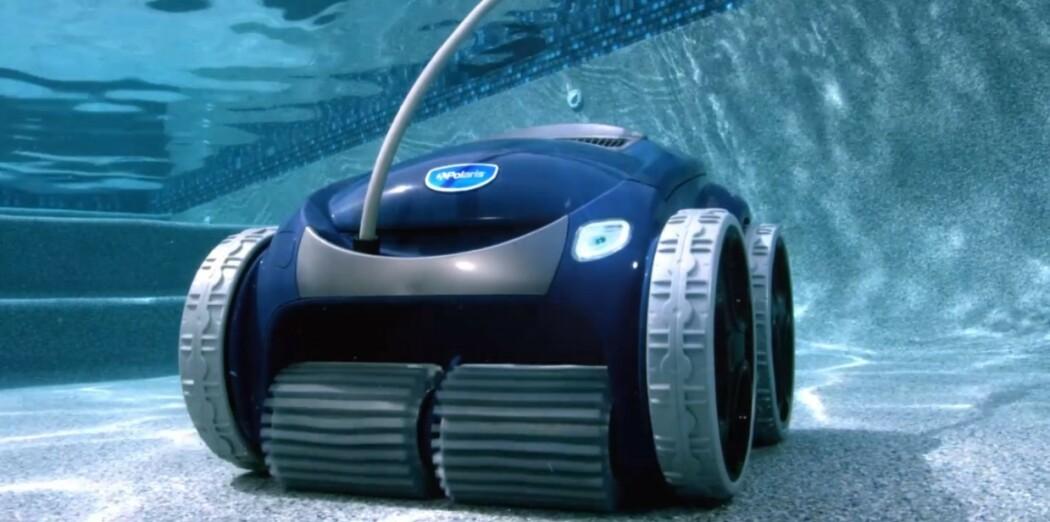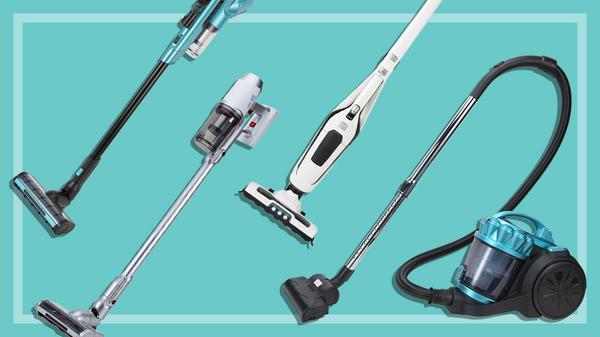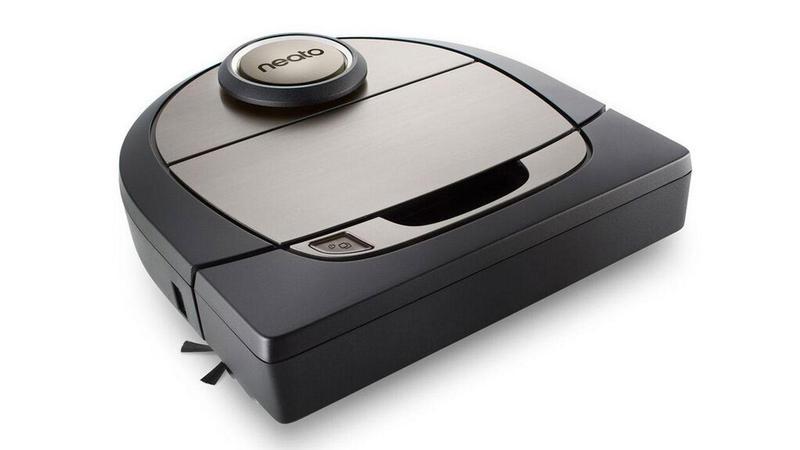Household Robots Market - Growth, Trends, COVID-19 Impact, and Forecasts (2022 - 2027)
New York, March02, 2022(GLOBE NEWSWIRE) -- Reportlinker.com announces the release of the report "Household Robots Market - Growth, Trends, COVID-19 Impact, and Forecasts (2022 - 2027)" - https://www.reportlinker.com/p06241302/?utm_source=GNW The household robots are also termed domestic robots, which are part of autonomous service robots for carrying out mundane works, such as floor cleaning, pool cleaning, and lawn mowing, but they can also be used for education, entertainment, and elderly assistance. According to the International Federation of Robotic Report 2019, unit sales of household robots are expected to increase by 46% on average per year, with more than 55 million units will be sold in 2022. Also, sales values for the household robot were up by 15% to USD 3.7 billion.Key HighlightsThe increasing investments by companies across the world to develop household robots for a wide range of applications are one of the significant factors driving the market. Samsung and LG Electronics, among others, are extensively investing in developing and launching new household robotic products. For instance, Jibo is developing social robots to integrate into the home lives for interactive companions and helper to families. Observing the market potential, start-ups offering household robot solutions are also attracting funding from international investors.The technological innovations in various fields, such as cognition, interaction, and manipulation, are making these household robotics much more appealing. The technology and other component providers have been instrumental in driving the robotics ecosystem forward. For instance, in June 2021, Toyota Research Institute (TRI) announced that its engineers had developed new capabilities for its new line of domestic robots. The new capabilities include recognizing and manipulating transparent objects and wiping down counters and tables.Additionally, with the increasing development in the machine vision cameras, companies are using these 2D and 3D machine vision cameras with AI technologies to effectively map and edges of the floor, such as a staircase, and to recognize obstacles, such as dustbins, cables, doorsills, and rugs. For instance, Xiaomi CyberDog is a quadruped robot capable of moving as fast as 3.2 meters per second. It is capable of object motion tracking, creating real-time maps, avoiding obstacles as it moves, and is powered by Nvidia’s Jetson Xavier AI platform.Owing to the outbreak of COVID-19, the demand for household robots has gained traction to perform various household chores, reducing human effort, but has been highly dependent on consumer spending patterns. Although the technology has significant usability, the high equipment cost limits the adoption rate for household robots. Furthermore, the decrease in its ASPs is expected to increase the purchase of these robots. Moreover, rental options provided by certain new companies may act in favor of the consumers.However, countries with high old-age populations need personal cognitive care, such as Japan. China and United States are opting for such solutions as they are much pocket-friendly as compared to the human workforce. For instance, according to the world bank, 28.39% of the population in Japan were in the age group of more than 65, whereas 18.65% in the United Kingdom. This suggests the increasing need for home-based primary medical assistance. Recently, in June 2021, an Israel-based company named Intuition Robotics developed the AI-based social robot ElliQ which has spent over 30,000 days in older adults’ homes over the past two years. With many upgraded functionalities, ElliQ will help increase patient engagement while offering primary care providers continuous actionable data and insights for early detection and intervention.Multiple companies are investing huge capital in product research and development owing to the increasing demand for such bots in the daily lives of the urban population. Rapid urbanization and the advent of smart homes with connected devices that can be easily controlled and monitored through smartphones have led to advancements in AI and cognitive learning. Such developments have recently been showcased in the innovation expo of 2021.Key Market TrendsThe Increasing Penetration of Automation in Household Appliances is Expected to Drive the Market GrowthThe household robots, also termed domestic robots, are part of the autonomous service robotics that are used for carrying out mundane tasks, such as pool cleaning, floor cleaning, lawn mowing, among others, but they can also be used for other purposes, such as entertainment, education, and elderly assistance. According to the International Federation of Robotic report, in October 2020, unit sales of service robots for domestic tasks are expected to reach 48.6 million units by 2023.The increasing penetration of automation in household appliances, rise in labor costs majorly in developed nations, and increasing safety concerns owing to the pandemic are driving the demand for the household robot across the world.? As per the US Bureau of Labor Statistics, the cost of cleaning laborers employed for residential and commercial purposes was USD 27,000 a year. However, a cleaning robot costs around USD 25,000 (one-time investment). Thus, cost efficiency and accurate cleaning are significantly promoting the acceptance of cleaning robots in the past few years.With the rapidly growing smart home concept, robotics is expected to play a crucial role in the overall smart home ecosystem. The reduction in household activities with the use of robotic vacuum cleaners is the key factor driving the market growth. Modern households are becoming more computerized, thereby delivering suitability and reducing the time spent on house chores. While vacuum cleaners have made home cleaning more manageable, they create noise and increase bulk for everyday use.The companies such as iRobot, Robomow, and Mayfield Robotics, are among the prominent players innovating the robots for household space. Innovations, such as detecting human behavior and voice recognition, are increasing customer confidence, thus driving the robotic deployment for household purposes, like cleaning, laundry, and other voice-enabled IoT activities.Among all these household robots, automated vacuum cleaners and moppers have been the most commercialized and developed products. Multiple companies are constantly investing and developing more compact and integrated vacuum cleaners and mopping robots in order to reach narrow places at home. The companies are integrating advanced technologies, such as voice recognition and laser-based technologies, to map the floor structure. For instance, iRobot launched the Roomba i7+, which can acquire voice commands and is equipped with intelligent mapping techniques.?The Asia Pacific Region is Expected to Witness the Fastest Market GrowthOwing to the significant adoption of household robots in economies such as China, Japan, and India, among others, the demand for and consumption of cleaning robots are expected to increase in the region due to the rapid development of robotic systems by the Chinese and Japanese companies.The region is one of the fastest-growing cleaning robots markets, mainly due to the massive adoption of technology with the increasing domestic production. The regional vendors also play a significant role in innovation and development in the cleaning robots field. For instance, in August 2021, Ecovacs partnered with Shopee in Vietnam as a part of its long-term mission in bringing ’A Robot for Each Home.’ The company started a trade-up program with Shopee, enabling users to update their current vacuum cleaners to the ECOVACS DEEBOT line of robotic vacuum cleaners, one of the industry’s best-performing vacuum cleaners.Also, in November 2021, Ecovacs launched a new Deebot - the T9 - into its range, which simultaneously sweeps, vacuums, and mops the floor and includes a built-in air freshener. It also comes with disposable mopping pads and is compatible with the Ecovacs Auto Empty Station, which allows the T9 to empty itself into a sealed disposable dust bag that holds up to 30 days of debris.In December 2021, Hong Kong-based AIRROBO launched its second product, the Robot Vacuum T10+. The T10+ is more advanced than AIRROBO’s first vacuum cleaner, the P10, released in August 2021. AIRROBO is based in Hong Kong and supported by UBTECH Robotics, specializing in AI and humanoid robotics.Moreover, in March 2021, Xiaomi introduced a "Robot"Vacuum Cleaner in Indonesia. The device comes with intelligent control that connects to the Mi Home app. Further, many companies are opening their shops in the region, boosting the market. For instance, in November 2020, Puresight Systems announced the launch of iRobot’s flagship stores in Delhi, Mumbai, and Bangalore. The exclusive showrooms have been launched in collaboration with Bonsai Ventures. iRobot is a provider of global consumer robots that designs and builds robots that empower people to clean and mop their homes.Competitive LandscapeThe market for household robots is moderately consolidated due to the presence of a few companies dominating the market. Also, the further development and commercialization of these products are expected to attract new entrants to the market. To gain more market share, the companies offering household products are making strategic acquisitions and product launches. Some of the recent developments are mentioned below.November 2021 - iRobot Corp. announced a partnership with Amazon to advance voice-enabled intelligence further using Amazon’s voice assistant, Alexa, for home robots that will result in more thoughtful, proactive smart home automation.October 2021 - Ecovacs Robotics launched its products in New Zealand. Its products available in the country include DEEBOT T9+, DEEBOT OZMO T8 AIVI, DEEBOT N8 PRO, and DEEBOT U2.January 2021 - Roborock launched the Roborock S7, the first robot vacuum in the world to combine ultrasonic mopping with mop lifting. The primary features of the device include sonic mopping, powerful 2500 pa suction motor, and VibraRise technology for efficient cleaning.Additional Benefits:The market estimate (ME) sheet in Excel format3 months of analyst supportRead the full report: https://www.reportlinker.com/p06241302/?utm_source=GNWAbout ReportlinkerReportLinker is an award-winning market research solution. Reportlinker finds and organizes the latest industry data so you get all the market research you need - instantly, in one place.__________________________
